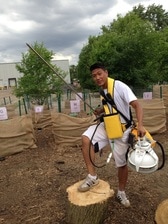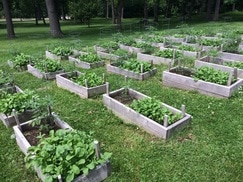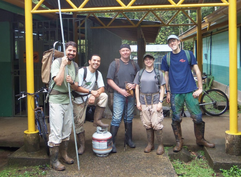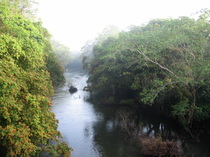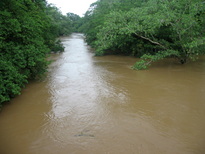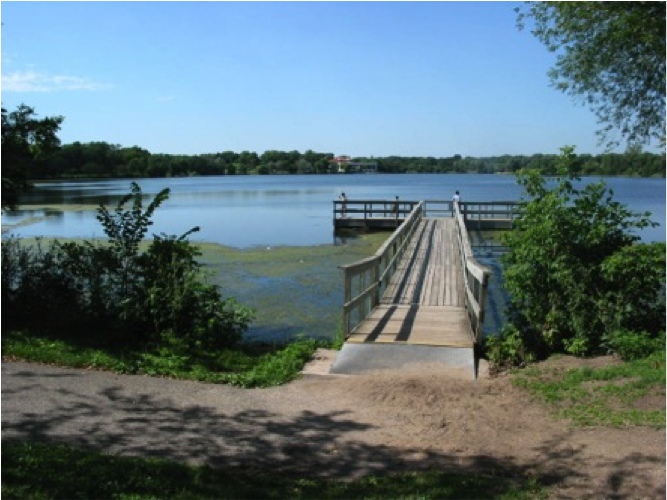|
Assistant Professor
Department of Biology University of St. Thomas 2115 Summit Avenue St. Paul, MN 55105 (651) 962-5166 gaston.small (at) stthomas.edu Curriculum vitae
|
Ecosystem Ecology
and Biogeochemistry |
Research Interests
I am broadly interested in the movement of nutrients through ecosystems, the effect of anthropogenic nutrient loading on the biotic community, and the role that humans and other species play in transforming and retaining nutrients at the catchment scale. I have used a combination of field measurements and manipulations, laboratory experiments, and modeling to explore questions at the interface of biogeochemistry, hydrology, and food web ecology.
My current research activities include the following projects:
My current research activities include the following projects:
|
Stream team at La Selva Biological Station. With Marcelo Ardon, Minor Hidalgo, John Duff, and Carissa Ganong.
|
Carbon transport and processing in tropical rivers.I analyzed a long-term neotropical stream chemistry data set to show that seasonal and inter-annual stream acidification is driven by CO2 inputs from soil respiration. We are currently measuring the seasonal contribution of in-stream metabolism to this CO2 loading, and to measure the capacity of stream microbes to utilize dissolved organic carbon of different qualities.
Collaborators: Marcelo Ardon (East Carolina University), Alonso Ramirez (University of Puerto Rico), Carissa Ganong (Northern Michigan University), John Duff (USGS), Cathy Pringle (University of Georgia) |
|
Nitrogen and phosphorus dynamics in urban lakes.
Many urban lakes in the Twin Cities are impaired due to excess nutrients and algal growth, and numerous initiatives have been launched to reduce nutrient loading in an attempt to improve water quality. We are combining modeling and empirical measurements of N and P dynamics to better understand how current and potential management practices might impact water quality. Collaborators: Jacques Finlay and Anika Bratt (University of Minnesota) |


